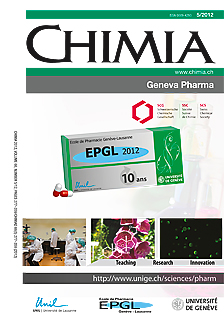How to Increase the Safety and Efficacy of Compounds against Neurodegeneration? A Multifunctional Approach
DOI:
https://doi.org/10.2533/chimia.2012.286Keywords:
Antioxidant activity, Bioconcentration, Hdac, NeurodegenerationAbstract
Successful drug design requires not only the detailed knowledge of the pharmacokinetic and pharmacodynamic profiles of the drug candidate portfolio but also a thorough documentation of the possible toxic effects on humans and the environment. Thus, experimental and computational strategies able to measure or predict specific profiles of designed compounds related to their potential toxicity are highly desired. Moreover, a strategy to avoid toxic effects thus enhancing the potential efficacy of drug candidates is of great interest. To fulfil this aim, the pharmacochemistry research unit at the EPGL has recently developed and improved methodologies that detect the potential human health and environmental hazards of compounds active against neurodegeneration at an early stage. A three-step strategy is presented herein. In particular, i) an alternative index to model the bioconcentration of chemicals in the environment was determined; ii) the antioxidant activity of chemical species against free radicals was evaluated. Moreover, since antioxidants play a key role in both toxicity prevention and neuroprotection, iii) the potential interaction of such compounds with enzymatic targets involved in the neurodegenerative cascade was investigated in silico.Downloads
Published
2012-05-30
Issue
Section
Scientific Articles
License
Copyright (c) 2012 Swiss Chemical Society

This work is licensed under a Creative Commons Attribution-NonCommercial 4.0 International License.
How to Cite
[1]
Chimia 2012, 66, 286, DOI: 10.2533/chimia.2012.286.







